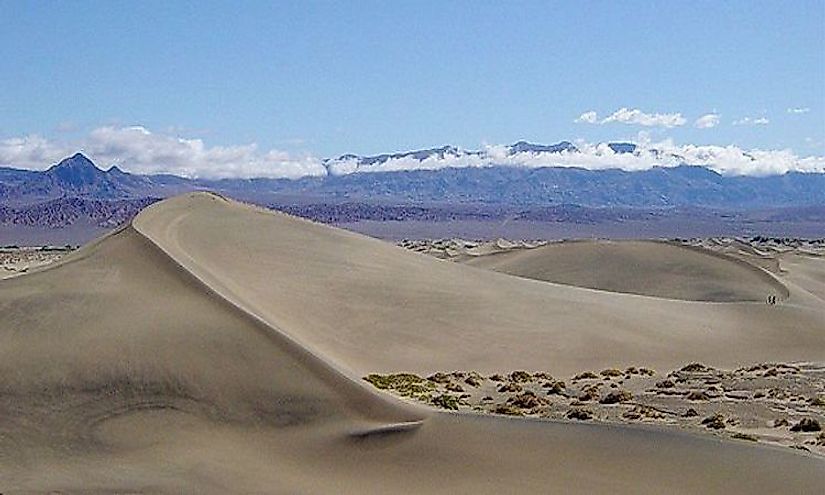Aeolian Landforms: What Is A Barkhan Dune?

Aeolian Landforms: What Is A Barkhan Dune?
Barkhan dunes are crescent–shaped dunes created by wind action and are common landforms in sandy deserts in many parts of the world. The term barkhan or barchans was introduced by a Russian biologist Alexander von Middendorf in 1881 in regards to the crescent-shaped dunes found in Turkistan and other desert regions. Barkhans are sickle-shaped and produced by wind action blowing from one direction. Barkhans can also be found on larger rocks and shrubs which act as anchors that hold the central area in place while the tips are blown away by the wind.
How Barkhans Are Formed And Where They Are Located?
Barkhan dunes can be formed when there are large amounts of sand in the desert and the availability of a steady wind blowing from one direction. However, if there is a great change in wind direction the crescent form of a dune can be destroyed. The Sahara and Gobi deserts in Africa and Asia respectively are the most notable places where barkhan dunes can be found.
Composition Of Barkhans
Barkhans are conspicuously asymmetrical disproportional in cross section including a gentle gradient that faces toward the wind sand hill that comprises of uniform grains of sand. Barkharn dunes have two ‘horns’ facing downwind. The steeper slope also referred to as the slip face, faces downwind and is usually positioned against the wind at the sand’s angle of repose about 30-35 degrees for standard fine dry sand. The upper side of the dune is filled by the wind and stands at approximately 15 degrees. Barkhan dunes can have a height of 9-30 meters and a base width of 370 meters which is measured perpendicular to the wind. Simple barkhan dunes tend to look like mega barkhan dunes or compound barkhan dunes which have the ability to slowly migrate in the direction of the wind as a result of erosion on the side facing the wind displacing it on the side sheltered from the wind. The speed of migrating barkhans can be slow, traveling at an annual migrating rate that ranges between 1-100 meters depending on the size of the dune since smaller dunes tend to move faster.
Characteristics Of Barkhan Sand Dunes
Barkhan dunes usually appear as solitary entities and can create chains that are stretched across a plain in the direction in which the wind is blowing. Megabarkhans and barkhans may integrate to form ridges that extend over hundreds of kilometers. The size distribution of barkhan dunes in a given field is determined by changes in wind and dune collisions which give rise to new Barkhans from the horns of old dunes.
The Migration Of Barkhans
Due to the migration of dunes, larger dunes are spaced out by the smaller dunes by holding the rear end of the larger dune and afterward appearing to course through the large dune to the opposite side. These processes take place superficially and mimic soliton behavior but instead of moving through a medium and leaving it undisturbed as it happens in solitons, in dunes the sand particles are moved. When the smaller dune nears, the larger one, wind begins to deposit sand on the dune that is on the rear side while blowing sand from the front dune without being replenished.In the end, the front dune becomes smaller and independently moves at a much faster speed than the rear dune.











